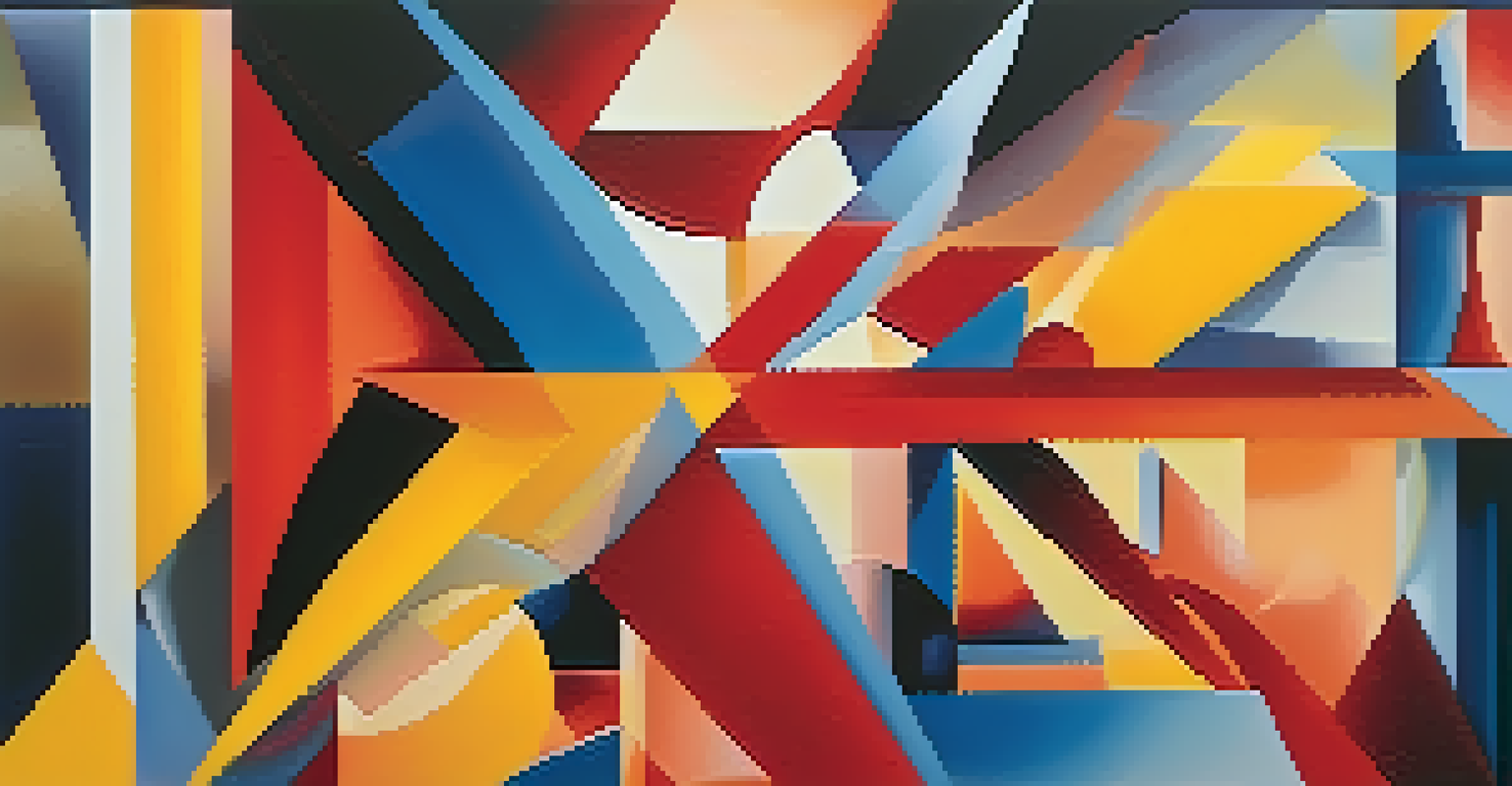Art as Communication: How Paintings Convey Meaning

The Language of Color: Emotions in Art
Color plays a vital role in conveying emotions in paintings. Just as a smile can brighten a person’s day, vibrant colors can evoke joy, while darker hues might stir feelings of sadness or melancholy.
Color is the keyboard, the eyes are the harmonies, the soul is the piano with many strings.
For example, consider Vincent van Gogh's use of yellow in 'Sunflowers.' The bright, warm tones create an inviting atmosphere, instantly lifting the viewer's mood. In contrast, Edvard Munch's 'The Scream' employs stark reds and blacks to evoke anxiety and despair.
Thus, colors in art serve as a universal language that transcends words, enabling artists to express complex emotions and connect with viewers on a deeper level.
Symbols and Imagery: Layers of Meaning
Beyond color, symbols in art offer another layer of communication. Artists often embed symbols that can represent various ideas, beliefs, or cultural references, enriching the narrative of their work.

Take, for instance, Salvador Dalí's 'The Persistence of Memory,' where melting clocks challenge our perception of time. Here, the clocks symbolize the fluidity of time, encouraging viewers to ponder their own relationship with it.
Color Evokes Emotions in Art
Colors in art serve as a universal language, conveying emotions that connect viewers with the artist's intent.
By understanding these symbols, viewers can uncover deeper meanings, making the experience of viewing art more engaging and thought-provoking.
Cultural Context: Influencing Interpretation
Art does not exist in a vacuum; it is deeply influenced by the cultural context in which it was created. Different cultures have unique symbols, traditions, and histories that shape the way art is perceived.
Art is the most beautiful of all lies; it is a lie that reveals the truth.
For example, the vibrant patterns and intricate designs in African tribal art tell stories of heritage and community, which may not be immediately apparent to someone from a different background. Understanding these cultural nuances enhances our appreciation and interpretation.
Thus, recognizing the cultural backdrop of a painting allows viewers to engage with the artwork more fully, appreciating the rich tapestry of meanings it conveys.
The Artist's Intention: What Do They Want to Say?
Every painting carries the artist's intention, a message they strive to communicate through their work. This intention can be explicit or subtle, often inviting viewers to explore their own interpretations.
Take Pablo Picasso’s 'Guernica,' a powerful anti-war piece that reflects the chaos and suffering caused by the Spanish Civil War. Picasso’s intention was to provoke thought and awareness about the horrors of war, making it a timeless commentary on violence.
Symbols Add Depth to Interpretation
Symbols embedded in artwork provide rich layers of meaning, inviting viewers to explore cultural and personal narratives.
By considering the artist's perspective, viewers can gain insight into the motivations behind a piece, enhancing their overall understanding and appreciation of the artwork.
Viewer Perspective: Personal Interpretation of Art
Art is as much about the viewer as it is about the creator. Each person's background, experiences, and emotions shape their interpretation of a painting, making art a subjective experience.
For instance, while one viewer may see tranquility in Claude Monet's 'Water Lilies,' another might feel a sense of nostalgia or longing. This personal connection adds depth and richness to the viewing experience.
Ultimately, the beauty of art lies in its ability to resonate differently with each viewer, creating a unique dialogue between the artwork and the observer.
The Role of Composition: Guiding the Eye
The composition of a painting—the arrangement of elements within the artwork—plays a crucial role in how meaning is conveyed. Artists use composition to guide the viewer's eye and emphasize important aspects of the piece.
Consider how the use of leading lines in a painting can draw the viewer's attention to a focal point, creating a sense of movement and narrative. This technique can evoke feelings of tension or harmony, depending on how it is employed.
Art Reflects Society's Values
Art acts as a mirror to society, capturing contemporary issues and prompting discussions about values and beliefs.
By understanding compositional techniques, viewers can appreciate the artist's craft and how it contributes to the overall message and impact of the artwork.
Art as a Reflection of Society: Commentary on Life
Many artists use their work as a commentary on the social, political, and cultural issues of their time. Paintings can serve as powerful reflections of society, capturing the zeitgeist and prompting discussions.
For instance, Diego Rivera’s murals often depicted the struggles of the working class, highlighting themes of inequality and labor rights. These artworks not only document history but also inspire activism and change.

Thus, art serves as a mirror to society, allowing us to reflect on our values, beliefs, and the world around us, making it an essential form of communication.